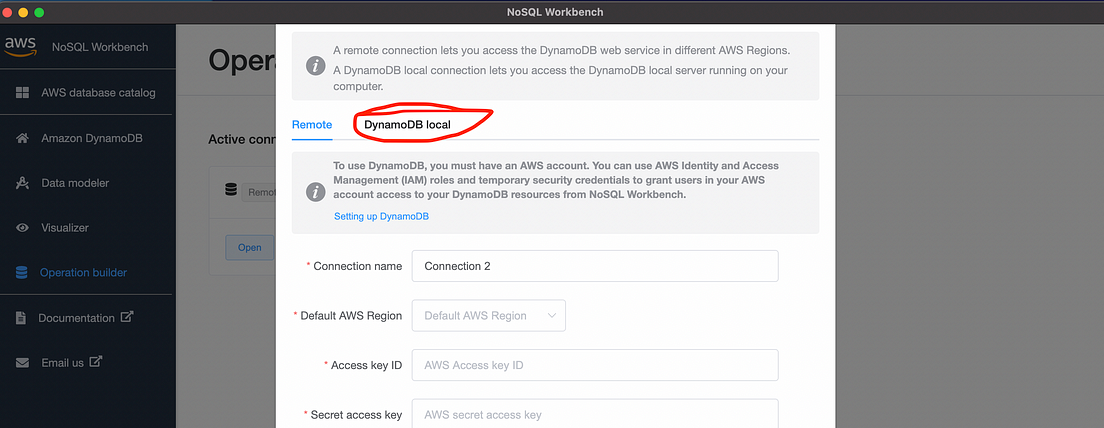
This psuedo-region represents test tool services running locally on your machine.įor now, you’ll see a single Amazon DynamoDB node representing the DynamoDB Local Test Tool.

Once the test tool is installed, pop open the AWS Explorer view and switch it to the Local (localhost) region.
#Test local dynamodb connection install#
Select the latest version and hit the Install button that’s above the list of versions the DynamoDB Local Test Tool will be downloaded and installed in the directory you specified. When the DynamoDB team releases future versions of the test tool, they will also show up in this list. There are currently two: the original version () and a newer version () which includes support for Global Seconday Indexes. The page also lists versions of the DynamoDB Local Test Tool available for installation. Then, head to the new DynamoDB Local Test Tool preference page, where you can specify a directory to install the DynamoDB Local Test Tool and a default TCP port for it to bind to. If not, you’ll need to install one and configure Eclipse to know where it is. Make sure you have a recent version of the Amazon DynamoDB Management plugin (v201311261154 or later) installed and follow along below! Installing DynamoDB Localįirst, head to the Eclipse preferences and make sure you have a JavaSE-1.7 compatible JRE installed. With the DynamoDB Local Test Tool integrated into the AWS Toolkit for Eclipse, using it is easier than ever.


When your application is ready for prime time, all you need to do is update the endpoint given to your AmazonDynamoDBClient. The DynamoDB Local Test Tool allows you to develop and test your application against a DynamoDB-compatible database running locally - no Internet connectivity or credit card required. We’re excited to announce that the AWS Toolkit for Eclipse now includes integration with the Amazon DynamoDB Local Test Tool.


 0 kommentar(er)
0 kommentar(er)
